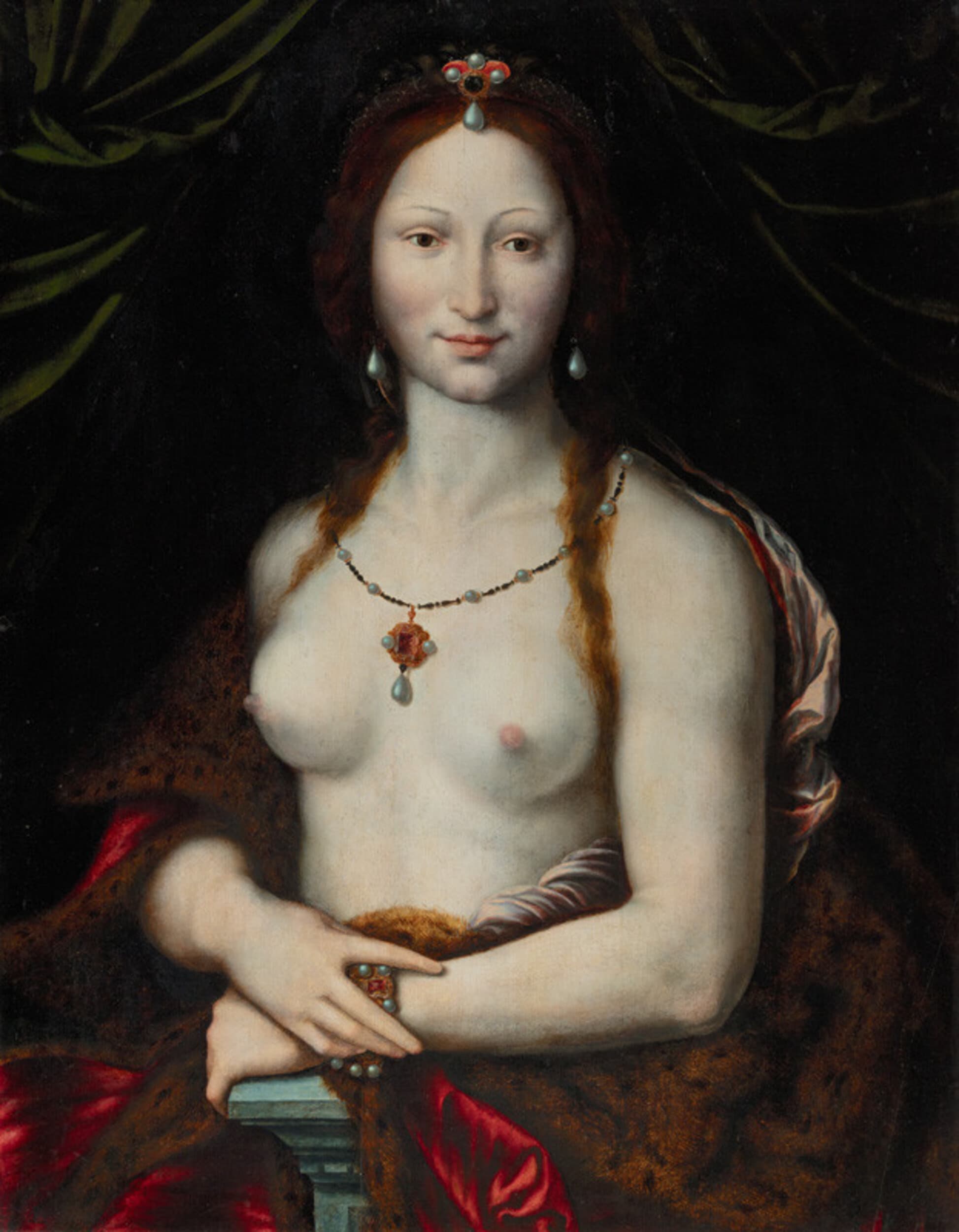Joos van Cleve - Mona Vanna Nuda

- Title: Mona Vanna Nuda
- Artist: Joos van Cleve (c.1485-c.1540)
- Date: first half XVIth century
- Medium: Oil on walnut panel
- Dimensions: 89 x 67 cm
This half-figure of a woman, depicted with exposed breasts, serves as a reinterpretation of Leonardo's iconic "Mona Lisa." While the original inspiration is rooted in Italian artistry, the stylistic characteristics of the work suggest a Dutch influence, with the medium likely being walnut wood commonly used in France. The amalgamation of these elements hints at the piece being a product of the Fontainebleau School.
The base material, natural chalk sourced from the Alps, further reinforces the association with this renowned artistic movement. Joos van Cleve, an admirer of Leonardo, spent time in France at the court of King Francis I, potentially between 1529 and 1534. It is widely speculated that he is the creator of this - perhaps intentionally crafted - forgery of Leonardo's work. The prototype for this piece was believed to be Leonardo's lost painting "Mona Vanna Boredom," which has been replicated numerous times by Leonardo's followers in Lombardy.